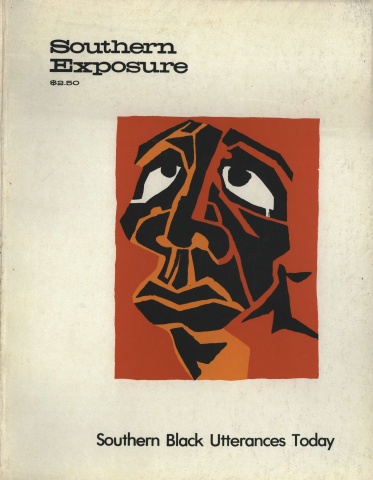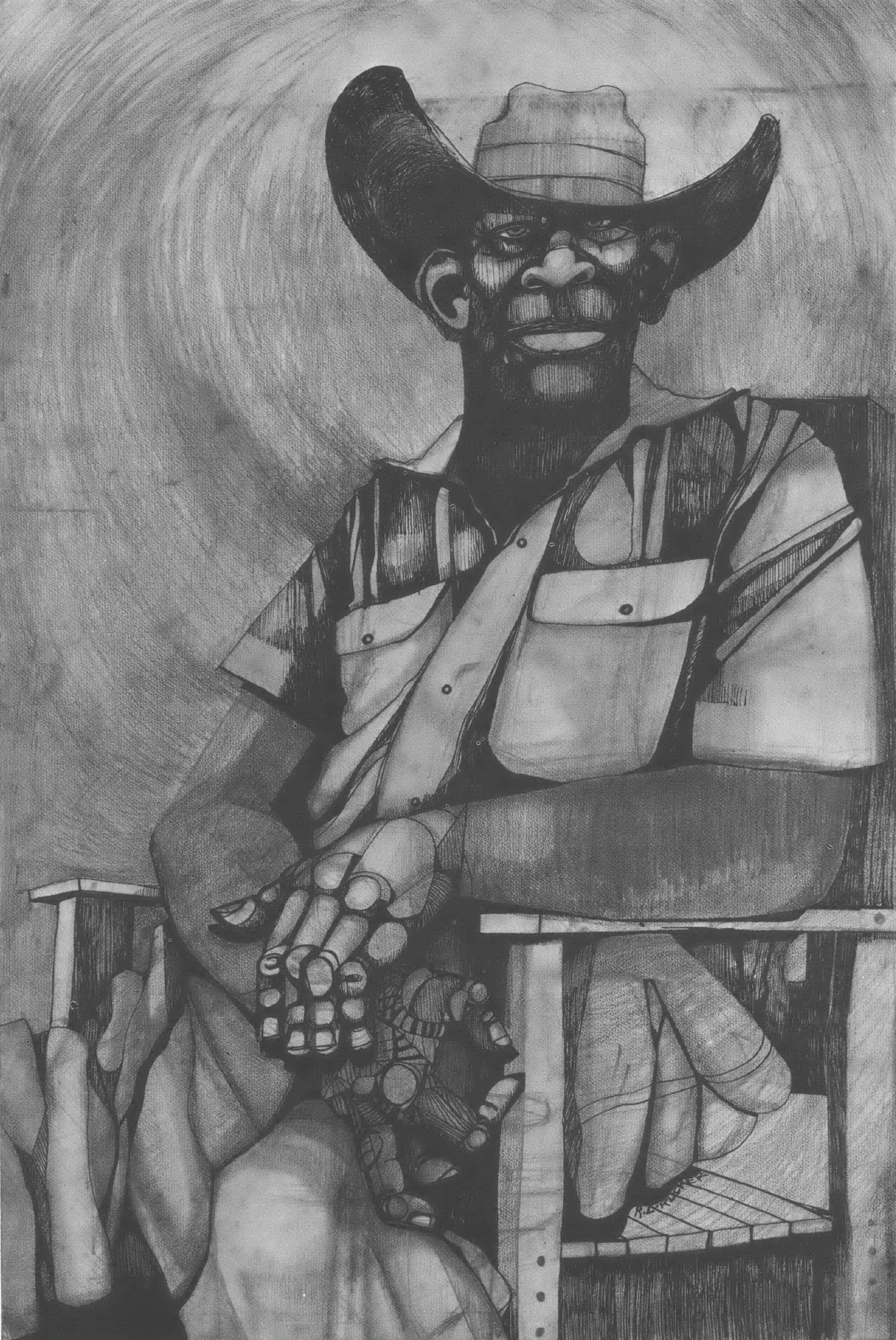
This article originally appeared in Southern Exposure Vol. 3 No. 1, "Southern Black Utterances Today." Find more from that issue here.
There is a growing and uneasy awareness that the welfare of our cities is linked to the options people have to stay in rural America. When the 1970 census data was released, we learned that 75 percent of the population is crammed together on only two percent of the available land. That revelation jarred a significant number of big city planners and politicians who were already pressuring Congress for relief from the decaying urban ecology, spiralling social and infrastructure costs, and fleeing middle-class taxpayers. For a brief moment, the urban lobby joined with rural legislators in Congress to identify a primary cause of the crisis afflicting both city and countryside in the pattern of rural-to urban migration itself. Under the leadership of Senator Herman Talmadge of Georgia, this formidable alliance pushed through an important but little noticed piece of legislation — the Rural Development Act of 1972. Supporters claimed that the urban-bound migratory tides could be stilled if industry —and thus employment — could be brought to rural areas; the government could in one single bill promote both "balanced economic growth" and "balanced population distribution." That was three years ago.
Today, the fervor around these twin issues has largely vanished, but the realities that tie population distribution and economic development together, that inextricably bind the poverty of rural areas with the collapse of our cities, cannot be ignored. Note these facts:
1. In the past 30 years (1940-1970) nearly 30 million Americans migrated from rural areas to the nation's major metropolitan centers.
2. Two-thirds of all substandard housing in the nation is in rural areas.
3. About half of all poverty in the nation is rural poverty.
4. There are fewer than 3,000,000 farms left in the nation, but slightly over one-third of these farms produce 90% of the nation's food and fibre.
5. Some of the most politically powerful organizations in the nation are organized around the production of food and fibre for example, milk, wheat, beef, paper/pulp, cotton, tobacco, and sugar; however, wage levels in agriculture are among the nation's lowest, and farm workers' bargaining rights are least protected by public policy.
6. Racial and sexual discrimination become more blatant the higher one goes in examining the structure of any rural-based industry. (Value-added profits escape black hands almost as soon as the products leave the fields.)
7. The medical profession has failed to provide adequate services (both qualitatively and quantitatively) to low-income residents and especially to rural minorities.
8. The rural share of some federal grant programs has been as low as 11%.
9. No American institution — not government at any level, not the organized church, not higher education (land grant colleges specifically), not the press, and certainly not private industry — has either definitively examined or effectively prescribed a resolution of rural poverty, which is particularly chronic in the South where the overall poverty rate is twice that of the rest of the nation.
None of these facts is new to policy-makers. In fact, they have used them to justify or rationalize a mode of economic development and population redistribution that features a further development of capital-intensive, machine-dominated industries with no corollary mode of human development.
That contradictory path of development of machines over men is nowhere more apparent than in the field of agriculture. Throughout the economy, it is more profitable to employ capital than it is to employ people because modern tax policy gives businessmen a distinct advantage if they invest in machinery rather than hire more labor. But in agriculture, this absurd arrangement results in the displacement of thousands of rural families who are forced to migrate to the cities or struggle to maintain a marginal existence at home.* And, of course, the prime victims of this displacement are rural black folks. Rather than "develop” the potentials of people on their own land where they have roots, economic policy is structured to make the production of agricultural products more efficient and more profitable in terms of the capital invested. The resultant displacement of the "losers" is treated as a "social cost" that society must pay in exchange for its relatively lower-priced food, or so we are told. In fact, the food is not that cheap, industry is allowed to profit as a consequence of using machines instead of labor, and the government, meaning you as a taxpayer, is saddled with the costs of subsidizing the out-of-work or under-utilized worker.
It is not necessary to elaborate on the economic and political forces which continue to orient rural development and agricultural production away from human considerations. They have been named time and time again (see: "Our Promised Land," Southern Exposure, Fall, 1974, and Sam Yette's The Choice: The Issue of Black Survival in America). The important thing to recognize is that for black people the application of industrial capitalism to agricultural production has most contributed to our oppression; and secondly, the struggle for liberation must both understand the dynamics of this oppression and the potential for exploiting our unique relationship to land and food production for absolute liberation. We have experienced the crushing weight of living as the "losers" in the civil conflict between the agrarian feudalists and industrial capitalists, as our history of agrarian peonage and forced migration will recall. Even as urban blacks, we continue to be among the losers, for we are forced as taxpayers to underwrite the federal policy that promotes agribusiness, as consumers to pay for artificially grown and priced food, and as urban residents to bear the bulk of the "social costs" of the migrating poor. What we must do for our own economic survival is develop an alternative interdependence between our rural and urban populations. The importance of controlling our own food is increased as we realize that we cannot depend on agribusiness to provide the safest or most nutritious food —a fact we can readily appreciate if we pause to remember the incidence of mercury in fish, cancer-producing substances in meat, chemical additives, dyes, waxes, seductively packaged junk food, the dumping of milk, pirating of wheat, slaughtering of calves, and the plowed under fields. To the degree that agriculture becomes business, it possesses the power to manipulate your diet for its own benefit, to provide or not provide, or indeed, to put dog food in your bowl.
What I am suggesting is that we eliminate our dependence on industrial capitalism and the federal government for our food, and at the same time develop an alternative base for economic/political power in the rural lands. We have in the black community nationally enough funds to convert groups of black-owned farms into cooperatives, to transport, process, and market food to urban communities across the country. (I know of but one black cooperative effort that is seeking this direction—The Federation of Southern Cooperatives headquartered in Epes, Alabama — and to be sure, the problems involved are many; but the Federation is a testament that it can be done.)
But beyond the actual delivery of food through alternative economic structures, this process requires and fosters a change in attitude and approach, particularly on the part of urban blacks. We can no longer accept the priorities and role definitions of the established system. We can no longer isolate our lives around a quest for personal wealth. If money is the chief consideration in what we do with our lives, then a commitment to build a rural community is out of the question. We would instead chase after the very same urban industrialists who destroyed the strength of that community, who prefer machines over men, and who are only too glad to give us a few dollars to become a machine that can be turned on and off at their will. To make a vocational or strategic choice based on the availability of money is to flirt dangerously with the views and agenda of those most responsible for placing dog food on urban black tables with one hand while displacing rural black farmers with the other. The time to remove ourselves from this process is now, and the place to begin is with a new interrelationship between rural and urban black communities.
*For more on the implications of capital-intensive agriculture for surplus labor, see Edward Higbee's Farms and Farmers in an Urban Age.
Tags
George Harris
Brother Harris, formerly the coordinator for the Southern Regional Council's Economic Development Task Force in Atlanta, is now working on his Ph.D. at Princeton's Woodrow Wilson School of Public and International Affairs. (1975)

